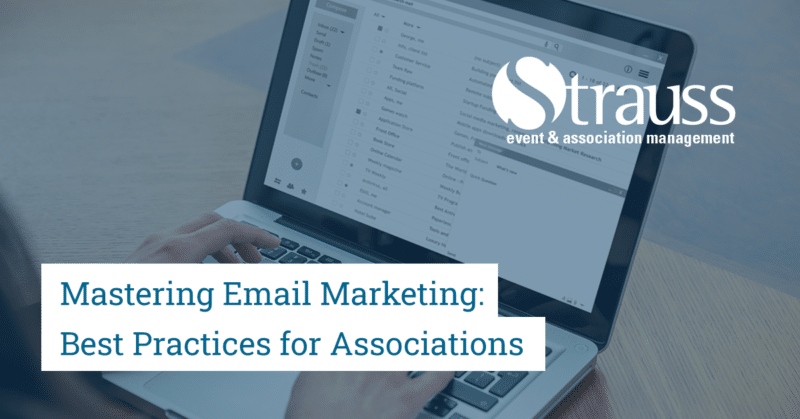Communications is fundamental for fostering strong connections and engagement within associations. Among the multitude of communication channels available, email remains an essential pillar for associations. When used strategically, email marketing best practices can be a powerful tool for reaching members, promoting events, and driving action.
In this article, I will delve into the importance of email marketing for associations and provide practical tips for creating compelling email campaigns. Be sure to also check out my marketing and communications colleague, Katia Ramirez’s insights on “How Email Marketing Benefits Associations”.
Why Email Marketing Matters
Email marketing offers associations a direct and personalized way to connect with members. Unlike social media posts or website updates, emails land directly in the recipient’s inbox, providing a dedicated space for communication. Moreover, email marketing allows for segmentation and personalization, enabling associations to tailor messages to specific audience segments based on interests, demographics, or past engagement.
Crafting Compelling Email Campaigns
- Segmentation: One-size-fits-all communications is a thing of the past. To maximize the effectiveness of your email campaigns, segment your email list based on relevant criteria such as membership status, interests, or geographic location. By sending targeted messages to specific segments or lists, you can increase relevance and engagement.
- Personalization: Personalization goes beyond addressing recipients by their first name. Whether it’s recommending relevant events or highlighting member benefits, personalized content resonates with recipients and fosters a sense of connection and community.
- Compelling Subject Lines: The subject line is your email’s first impression and plays a crucial role in determining whether it gets opened or ignored. Craft concise and compelling subject lines that pique curiosity, offer value, or evoke emotion. In Melanie N. Gagic’s article, “Top 3 Tips For Creating Emails Members Will Actually Open” you can find insightful tips on how to craft compelling subject lines that serve as your email’s first impression, crucial for determining whether it gets opened or ignored.
- Engaging Content: Keep your email content concise, relevant, and visually appealing. Use compelling visuals, concise copy, and clear calls-to-action to guide recipients towards the desired action, whether it’s registering for an event, renewing their membership, or accessing exclusive resources.
- Optimizing Deliverability and Open Rates: Ensure that your emails reach the intended recipient’s inboxes by maintaining a clean email list, using a reputable email service provider, and following best practices for email authentication. You can also find more tips in L. Kristi Burke’s article related to “Writing a Powerful Mass Email”.
Conclusion
Email marketing remains a cornerstone of effective communication and marketing strategies for associations. By segmenting your email list, personalizing content, and optimizing deliverability and open rates, you can create compelling email campaigns that resonate with your members and drive desired actions. Remember, effective email marketing is not just about sending emails—it’s about fostering meaningful connections and delivering value to your audience.

